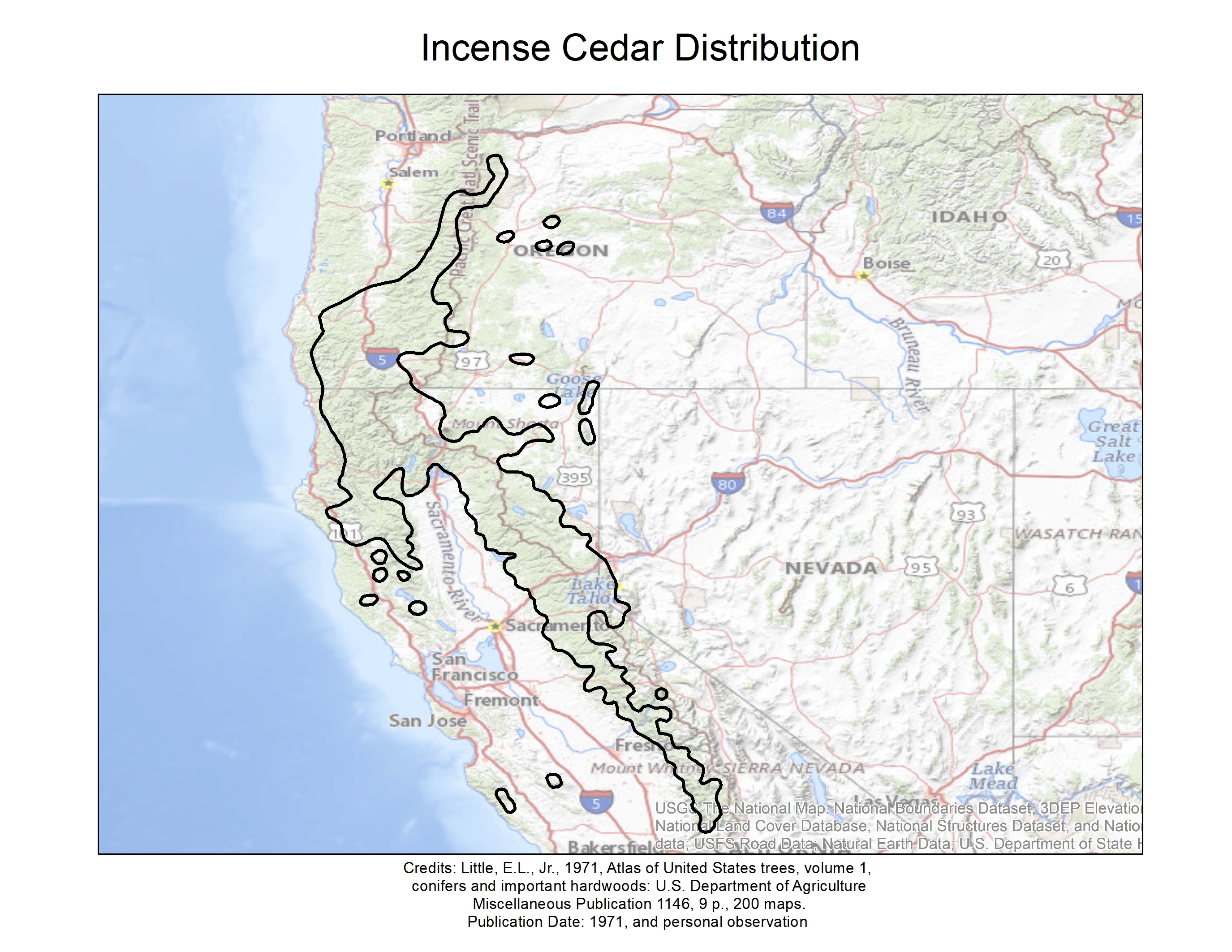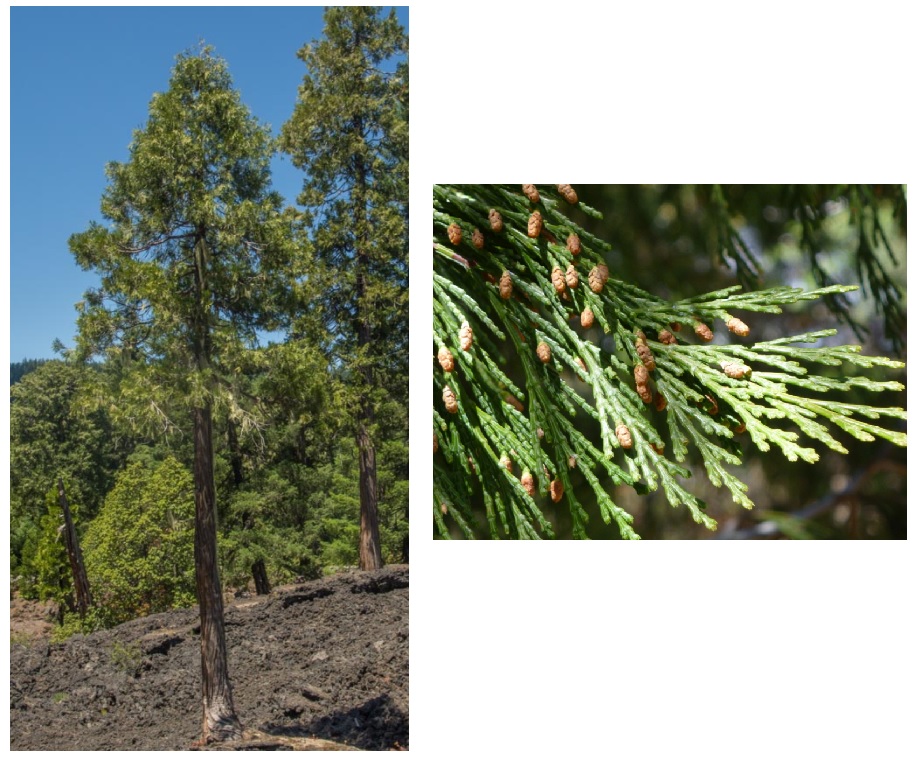Description:
The incense cedar is not really dominant in the High Desert, although it does make some incursions into the western part of the region in a few spots just east of the Cascades and in the Warner range of northeast California. It mainly sticks to the coast ranges and the Sierra Nevada, where it flourishes. It is primarily a mid-elevation tree, often sharing the billing with the ponderosa pine and a variety of other conifers.
They sometimes achieve a wide, pyramidal shape, often reaching over 150 feet in height. They can look like the giant sequoia from a distance, but close-up their needles look somewhat like junipers. If they are well tended in someone’s yard, or well-watered in a natural setting they can grow quickly and luxuriously. While in the wild however their canopies can look rather unkempt.
Their cones are usually about one and a half inches long. Their bark is very conspicuous, being reddish and rather fibrous and thick.
Personal Observations:
This one is a work in progress. They were quite a common occurrence in the Sierra Nevada foothills, where I used to live. They are less common in the High Desert, but I am finding them in the transition zone with the Cascades. I spotted them in the Metolius River area and northeast of Prineville, Oregon, not far from Mill Creek Wilderness. I heard that they are on Powell Butte which is located in more of what I would term the High Desert. I scoured Powell Butte and only saw western juniper. I don’t think the conditions are right for it there, but I will keep an open mind.
I have recorded several of them east of Lake Tahoe. I saw them proximate to ponderosa pine, Jefferey pine, white fir, and lodgepole pine.
Links:
https://www.conifers.org/cu/Calocedrus_decurrens.php


